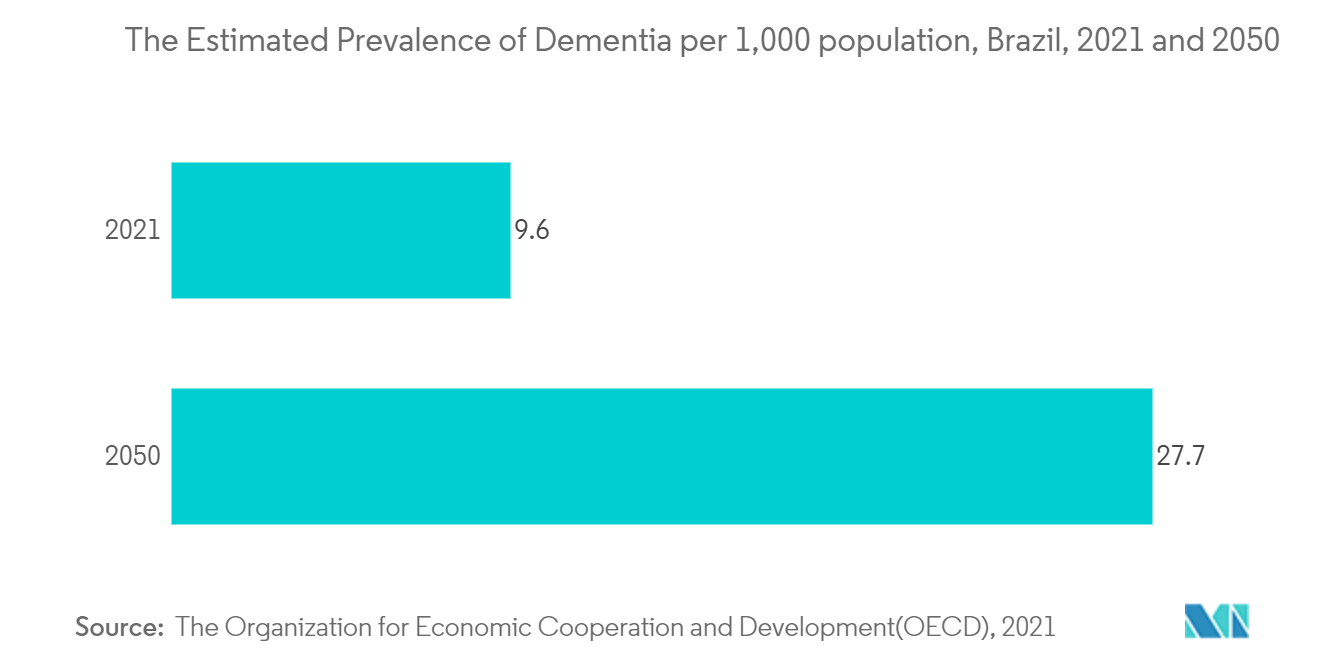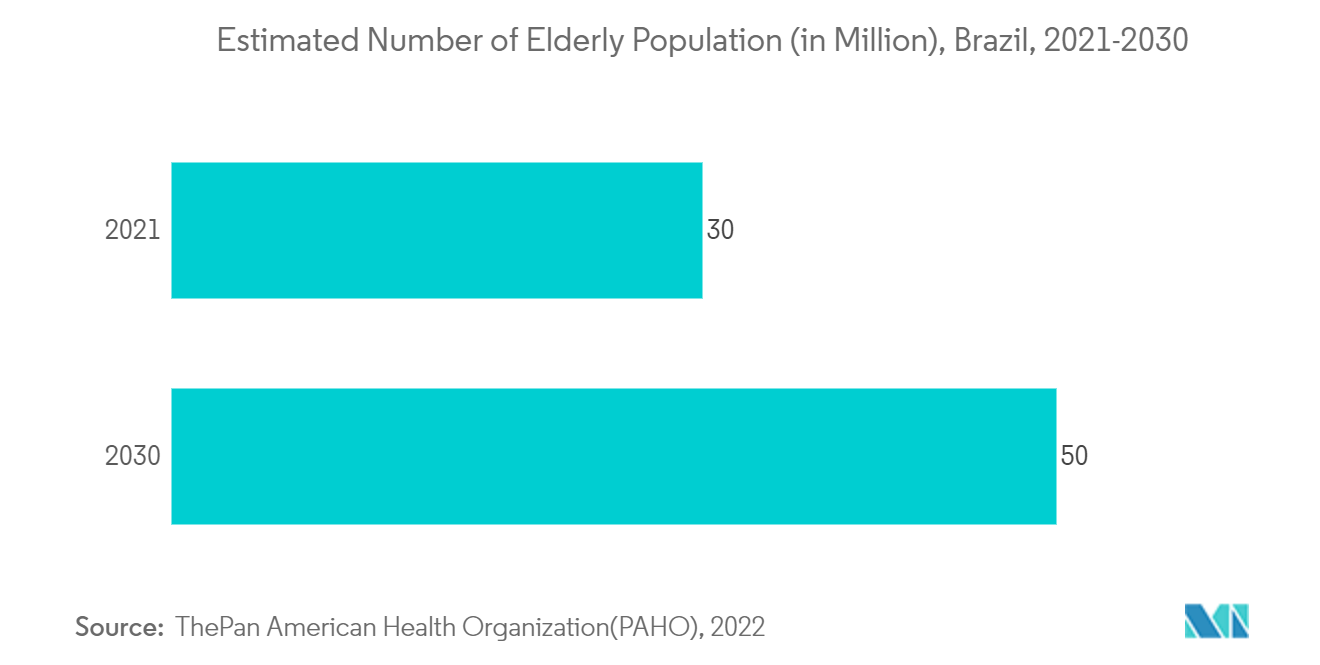Market Trends of Brazil Ultrasound Devices Industry
The Radiology Segment is Expected to Witness Significant Growth Over the Forecast Period
Interventional radiology (IR) can be defined as a medical subspecialty that performs various minimally invasive procedures using medical imaging guidance.
The ultrasound market for radiology applications in Brazil is expected to grow owing to the factors such as the rising number of interventional neurological procedures, genitourinary interventional procedures, and a growing number of cancer procedures.
The country has witnessed an increase in the number of cancer and neurological diseases, which is expected to elevate the demand for ultrasound imaging and boost the segment's growth. For instance, as per the data published by the International Agency for Research on Cancer (IARC) in 2023, in Brazil, the number of brain and nervous system cancer cases is estimated to reach 13.9 thousand by the year 2025, and it is expected to increase further to 15.5 thousand by 2030. Such a high number indicates that the demand for ultrasound systems in radiology departments will increase with the growing burden of cancer. In addition, as per the data published by the Organization for Economic Cooperation and Development (OECD) in 2021, over 9.6 individuals in every 1,000 people in Brazil were reported to have dementia in 2021. The same source stated that this number is expected to increase to 27.7 individuals in every 1,000 people in Brazil by 2050. Such a vast patient base of dementia in Brazil is expected to increase the demand for ultrasound devices for diagnosis and conduct more research studies to understand better disease development, which is expected to drive the segment's growth.
Moreover, the country offers opportunities for expansion to market players, likely increasing the market penetration in Brazil, thereby fueling the segment's growth. For instance, in February 2021, Insightec received market approval from the Brazilian Health Regulatory Agency, ANVISA (Agência Nacional de Vigilância Sanitária), and partnered with Strattner to bring Focused Ultrasound to the Brazilian market.
Therefore, the radiology segment is expected to witness significant growth over the forecast period due to the abovementioned factors, including the high burden of cancer, dementia, and the recent development by the market players.

The 3D and 4D Ultrasound Imaging segment is Expected to Witness Significant Growth Over the Forecast Period
The segment includes three and four dimensions ultrasound imaging, mainly visualizing fetal structures and internal anatomy. The 4D ultrasounds enable live-streaming video of the images, offering the visualization of the motion of the fetal heart valves and walls and the current blood through various vessels.
The segment is expected to grow with advancing 3D and 4D ultrasound imaging research. Several studies performed by Brazilian researchers have underlined the emerging use of 3D and 4D ultrasound imaging, which has shown efficacy in diagnosing and visualizing the target organs. For instance, a study published in Obstetrics & Gynecology Science in May 2021 highlighted the effectiveness of 3D ultrasound for detecting fetal cardiac diseases and cardiac myopathies. The study stated that 3D ultrasound was used along with the advanced technology of the spatiotemporal image correlation and virtual organ computer-aided analysis, which detected the changes in the interventricular septum volume of fetuses in the pre-gestational and healthy mothers. The study further emphasized that 3D ultrasound imaging can timely diagnose fetal anomalies found in diabetic mothers, including conotruncal anomalies, ventricular septal defects, hypertrophic myocardiopathy, and other cardiac malformations. Thus, with such research, the demand for 3D ultrasound is expected to increase for fetal diagnosis and will likely boost the segment's growth.
Further, a study published in the journal PAIN Reports in January 2021 mentioned using 4D ultrasound imaging to assess pain using facial expressions in the human fetus. The study stated that such pain assessment could reveal the implications in postoperative pain management after intrauterine surgical interventions. Such research is expected to improve intrauterine surgical interventions' safety by reducing fetus pain. Thus, these findings are expected to attract more research and developments in 4D ultrasound imaging, which is anticipated to boost the segment's growth.
Therefore, the 3D and 4D ultrasound segment is expected to grow significantly over the forecast period due to the advancing research in 3D and 4D ultrasound imaging.


